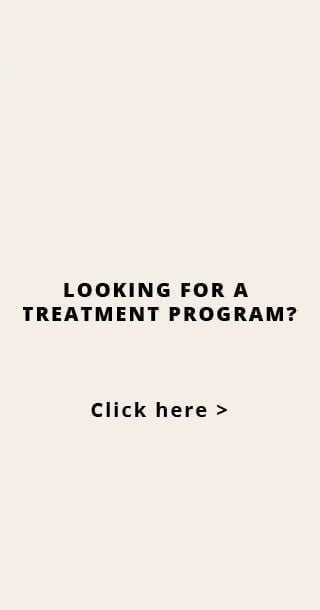Estimated reading time: 9 minute(s)
The relationship between alcohol and eating disorders is on the rise throughout society. A large number of people abuse alcohol as an unhealthy coping mechanism to deal with issues like eating disorders. Unfortunately, statistics suggest that many women who suffer from eating disorders like anorexia also commonly engage in binge drinking behaviors for appetite suppression, while others do so to manage the anxiety before binge eating and reduce the guilt later. Even the National Institute on Alcohol Abuse and Alcoholism agrees that eating disorders and alcoholism frequently co-occur, making it imperative to seek treatment for both conditions to achieve full recovery.
Eating Disorder and Alcoholism Statistics
- Approximately half of the individuals with a diagnosed eating disorder also abuse drugs or alcohol
- 25 percent of people who seek treatment for an eating disorder also meet the criteria for one or more types of substance abuse disorder
- Substance abuse is more likely to occur in people with eating disorders five-fold compared to the general population
- Some commonly occurring eating disorders in people who abuse alcohol and drugs include anorexia nervosa (12 to 18 percent), binge eating disorder (25 percent), and bulimia nervosa (30 to 50 percent).
How do Eating Disorders and Alcoholism Co-Occur?
A lot of people who consume alcohol notice how they eat differently whenever they are planning to use alcohol while using it and after having a drink. For example:
- They may prefer having a meal beforehand to decrease the intensity of alcohol-related effects
- They may eat more snacks during a drinking session than they would in a sober state
- They may eat certain foods to get over the hangover symptoms more quickly
For people with eating disorders, their substance use dramatically affects their relationship with body image, exercise, and food – all of which are essential factors that are affected by an eating disorder. These people are generally up to five times more likely to acquire a substance use disorder than the average population. Additionally, research also indicates that:[1]
- Many people rely on alcohol to cope with their eating disorder diagnosis, for example, using alcohol to cope with the effects of an eating disorder, distract the mind from the negative feelings related to an eating disorder, or even as a substitute for food
- People who suffer from an eating disorder and alcoholism at the same time are also more likely to be impulsive.
- People with binge eating disorders are much more likely to drink larger amounts of alcohol in one sitting than people diagnosed with other eating disorders.
- Binge eating and drinking often occur together in situations involving social pressures, unpleasant emotions, temptations, or physical discomfort.
- People diagnosed with bulimia nervosa are up to two times more likely to abuse alcohol than people with other eating disorders.
Determining the Risk Factors for Eating Disorders and Alcoholism
Eating disorders refer to any unusual disturbances in eating behaviors secondary to distressing emotions and thoughts. These disorders can easily impact physical, social, and psychological health in a negative way and are typically multifactorial with psychological, biological, and sociocultural roots. In general, most eating disorders are due to neurotransmitter imbalances in the brain; therefore, they are more likely to co-occur with other psychiatric illnesses, such as anxiety, depression, and alcohol use.
Some common risk factors that may trigger an eating disorder and alcohol use disorder together in a person include the following:
- A history of significant past trauma
- Impulsive behaviors
- History of mood disorder
- History of childhood obesity
- Emphasis on perfectionism deeply rooted in an individual’s nature as well as their social circle
- Receiving messages from peers, family members, or doctors about unsatisfactory body weight situation
While eating disorders are stereotyped to only occur in females, people of any gender can acquire them. Interestingly, research shows that people who identify as non-binary and transgender have the highest risk of adopting eating disorders. Moreover, the prevalence of this disorder is higher in individuals who identify as bisexual, lesbian, or gay than in people with any other non-heterosexual identity.
Alcoholism in Different Types of Eating Disorders
Alcoholism is likely to hit people with different types of eating disorders. Some of the common ones include the following:
Anorexia Nervosa
Drunkorexia is a slang term often used to describe the presence of anorexia in people with alcohol use disorder. [2] It indicates an unhealthy phenomenon where a person restricts their diet to little or nothing so that they can maximize their alcohol intake without putting on extra body weight. The calories that a person with alcoholic anorexia consumes cannot compensate for the calories they normally receive from food because alcohol has zero nutritional value. As a result, such people experiencing both issues together often become malnourished and suffer from the social and health risks of alcoholism.
Alcoholism and anorexia are more likely to occur in college-age females, even though males and people from other age groups can also develop them. Most researchers believe this is due to the cultural prevalence of drinking and peer pressure that girls who recently joined college face. Drunkorexia may not be clearly evident in people during the initial stages of the problem; however, it can become a serious issue with time.
Alcohol and Bulimia
A person who is bulimic and alcoholic is likely to binge on food and alcohol, followed by making themselves vomit due to feelings of guilt and shame about their behavior. People with bulimia nervosa are also likely to abuse alcohol to numb their guilt from binge eating episodes. Others do it in hopes of managing their eating disorder symptoms with alcohol in a better way. A small group of people also develop both issues together to address a deficiency in some area of their life where they feel they are lagging behind.
Experts believe that some people with bulimia may overuse alcohol and other substances as a way to make themselves vomit more easily. However, such people must remember that overdosing can easily lead to alcohol poisoning, which can quickly become life-threatening and even fatal if help does not arrive in time.
Alcohol and Binge Eating
Experts consider binge eating disorder (BED) as the most common form of eating disorder in the American population. People with this disorder often overeat to escape a negative feeling or emotion. This unhealthy coping mechanism often triggers feelings of guilt, shame, and self-loathe.
A common reason why people binge eat and drink is that both activities release dopamine. Dopamine is a neurotransmitter related to the feelings of happiness, reward, and pleasure in the brain. Someone deficient in this brain chemical experience or someone with anxiety may indulge in binge drinking and eating session as a way to cope with their issues. Another common cause of binge eating and drinking is an undiagnosed psychological issue. For instance, a person with depression may engage in these behaviors to control their symptoms in a better way. Societal pressure also sometimes makes people succumb to binge eating and drinking temptations. Such people have a solid desire to fit in society and meet their standard for a perfect body, and in doing so, they may develop Bed and alcoholism.
The Dangers of Co-occurring Alcoholism and Eating Disorders
The dangers of co-occurring eating disorders and alcoholism may vary depending on the type of eating disorder a person suffers from. Some common dangers include:
- Blackouts
- Hypoglycemia
- Alcohol poisoning
- Alcohol-mediated brain damage
- In the long run, such people also become vulnerable to developing alcohol-related health issues, such as the following:
- Osteoporosis
- Liver disease
- Dementia
- Cardiac problems
- Diabetes
Certain populations, such as students, who engage in these risky behaviors together are at a higher risk of sexual assaults, unprotected sex, driving under the influence, and more. Alcoholism, along with certain types of eating disorders, such as anorexia, can also take a toll on a person’s physical appearance. Alcohol alone rapidly eats up the body’s nutrient and vitamin stocks while speeding up the aging process. In anorexic alcoholics, symptoms like brittle hair and nails, acne, anemia, dizziness, constipation, and abdominal bloating may occur.
Treating Alcoholism and Eating Disorders
Many times, when a person seeks treatment through an eating disorders program, their alcohol addiction problem automatically exacerbates. This exacerbation then negatively affects their eating disorder treatment and recovery, making them enter a vicious cycle where they are unable to overcome any of the issues. Hence, it is imperative to join a treatment plan that pays equal attention to alcoholism and underlying eating disorder and treats them side by side for comprehensive recovery.
Fortunately, such integrative treatment programs are widely available in different rehabs. These programs use one or more of the following components to ensure that such people overcome all co-existing issues and regain control of their life.
Pharmacotherapy
Many rehabs have medications available for both substance use disorder and mental health issues. Each client closely works with a psychiatrist to know which medication will work the best for them. Some people receive medication to make their alcohol withdrawal more manageable, while others need it to rebalance the neurotransmitters in the brain.
Behavioral Therapy
Experts rely on different types of behavioral therapy to address eating issues and alcohol addiction. One of these therapies is cognitive behavioral therapy which can take place in a one-to-one and group setting. As a part of this therapy, clients learn how to identify their negative thoughts that lead to adverse outcomes. With the help of a certified therapist, these individuals then learn how to adjust these negative thought patterns or replace them with positive ones. CBT usually has many sub-therapies that can help clients deal with specific issues, such as eating disorders. Some other therapies that experts may use include the following:
- Dialectical behavior therapy
- Somatic therapy
- Mindfulness
- Acceptance and commitment therapy
Recovery Support
Many rehabs introduce their clients to multiple support services during their treatment. These support services commonly include the 12-step program and the famous Alcoholics Anonymous. Clients can continue to attend these services even after they finish the treatment program and re-enter the community. These services are mostly available as in-person sessions, but some centers also offer virtual programs for clients who cannot physically attend these sessions.
FAQs
When do people experience eating disorders and alcoholism?
Eating disorders can hit a person at any point in life. However, they more commonly show up during the teenage or early adulthood years. These are the stages of life where most people also start experimenting with alcohol and other drugs. People from different age groups may also develop these issues together, especially during times when they are going through emotional and physical difficulties.
Why is drunkorexia so risky?
Drunkorexia involves eating minimal to zero food to drink high amounts of alcohol without gaining weight. Such people do not get enough calories from food, and their only source of these calories is alcohol. Because alcohol mostly has empty calories that offer no nutrition, such people are at a high risk of acquiring vitamin depletion, dehydration, nutritional deficiencies, and other mental and physical issues.
What treatment services can help me recover from alcohol use disorder and eating disorder at the same time?
According to experts, the treatment services you must receive to achieve recovery from both issues at the same time include the following:
- Extensive assessment and screening
- Tailored treatment programs supervised by a physician or psychiatrist
- Psychoeducational classes
- Medication monitoring
- Dual diagnosis recovery support groups
- Early recovery skills classes
- Family therapy
- Relapse prevention skills
- Aftercare planning
References
1 Krahn, D. D. (1991). The relationship of eating disorders and substance abuse. Journal of Substance Abuse, 3(2), 239-253.
2 Lupi, M., Martinotti, G., & Di Giannantonio, M. (2017). Drunkorexia: an emerging trend in young adults. Eating and Weight Disorders-Studies on Anorexia, Bulimia and Obesity, 22(4), 619-622.


